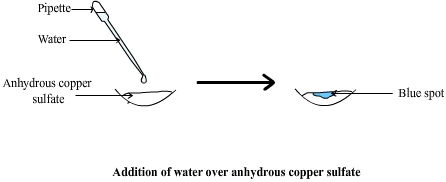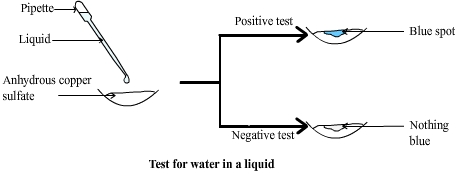Having access to clean and safe drinking water is one of the most important aspects of health. But how do you know if the water you’re drinking is safe and free of contaminants such as copper? Testing for copper in water chemistry is a simple and efficient process that can save you from potential health risks.
In this article, we’ll discuss how to test for copper in water chemistry and explore why it’s important to keep your water free of this metal. We’ll provide an overview of the tools needed to test for copper, as well as tips to help you keep your water safe and healthy. So, if you’re interested in learning how to test for copper in water chemistry, keep reading.
- Collect a sample of the water you want to test.
- Use a copper testing kit to measure the amount of copper in the sample.
- Compare the results to the acceptable copper levels set by the Environmental Protection Agency.
- If the level is too high, take corrective measures to reduce the copper concentration in the water.

How to Test for Copper in Water Chemistry?
Copper is a heavy metal found in many natural water resources and is used for a variety of purposes, from industrial production to water treatment. Testing for copper in water chemistry is important in order to assess the safety of the water for human consumption, as well as to determine the suitability of water for industrial applications. This article will discuss the different methods used to test for copper in water chemistry, as well as the steps required to take a sample and analyze the results.
Sample Collection and Preparation
The first step in testing for copper in water chemistry is to collect a sample of the water that is to be tested. This sample should be taken from a location that is representative of the water in question, and should be collected using appropriate sampling procedures. Once the sample has been collected, it should be filtered to remove any debris or particles that could interfere with the testing process. The sample should then be stored in an airtight container and kept at a temperature of 4°C until it can be tested.
The next step in the sample preparation process is to adjust the pH of the sample to a range of 6.5 to 8.5, as copper is more easily detected in samples with a neutral or slightly alkaline pH. This can be done by adding either acid or base to the sample, depending on the initial pH. Once the sample has been adjusted to the correct pH range, it can then be tested for copper.
Testing for Copper
There are several different methods used to test for copper in water chemistry, including atomic absorption spectroscopy (AAS), inductively coupled plasma spectroscopy (ICP-MS), and flame atomic absorption spectroscopy (FAAS). Each of these methods has its own advantages and disadvantages, and it is important to select the appropriate method based on the type of sample being tested, the concentrations of copper that need to be detected, and the accuracy of the results that are required.
AAS is the most commonly used method for testing for copper in water chemistry, and it relies on the principle that when a sample is exposed to a specific wavelength of light, the atoms in the sample will absorb the light energy at a unique frequency. This frequency is then used to determine the concentration of the element in the sample. ICP-MS is also a popular method for testing for copper, as it is capable of detecting very small concentrations of the element. This method relies on the principle that when an electric current is passed through the sample, the electrical charge of the atoms will cause them to emit a specific signal. This signal can then be used to determine the concentration of the element in the sample.
Finally, FAAS is also used to test for copper in water chemistry, as it is capable of detecting very low concentrations of copper. This method relies on the principle that when a sample is exposed to a flame, the copper atoms in the sample will absorb energy from the flame, causing them to emit light at a unique frequency. This frequency is then used to determine the concentration of the element in the sample.
Interpreting the Results
Once the results of the testing process have been obtained, they should be interpreted carefully in order to determine the levels of copper present in the sample. The results should be compared to the acceptable levels of copper in drinking water, as established by the Environmental Protection Agency (EPA). If the results show that the levels of copper are higher than the acceptable levels, further investigation may be required to determine the source of the contamination and to take steps to reduce the levels of copper in the water.
In addition to interpreting the results, it is also important to consider the possible sources of contamination, such as industrial runoff or corrosion of pipes. If the source of the contamination is determined, steps can be taken to reduce the levels of copper in the water. This may involve treating the water with a chemical such as chlorine, or installing additional filtration systems.
Analyzing the Results
Once the results of the testing process have been obtained and interpreted, it is important to analyze the results in order to determine the best course of action for reducing the levels of copper in the water. Some of the methods that may be considered include treatment with chemicals, such as chlorine, or the installation of additional filtration systems. It is also important to consider the cost of these solutions, as well as their potential impacts on the environment.
Finally, it is important to monitor the levels of copper in the water on a regular basis, in order to ensure that the levels remain within acceptable limits. This can be done by taking samples from the same location on a regular basis and testing them for copper levels. By monitoring the levels of copper, it is possible to ensure that the water remains safe for human consumption and suitable for industrial applications.
Frequently Asked Questions
Finding out if copper is present in water can be an important first step towards understanding the chemistry of a water sample. Here are some frequently asked questions about testing for copper in water chemistry.
What is copper and why is it important to test for it?
Copper is a naturally occurring element that can be found in both freshwater and saltwater environments. It is an essential trace element for many living organisms, and it has many industrial uses. Testing for copper is important because it can be an indicator of water quality and contamination. Copper can be toxic to aquatic organisms in high concentrations, and can also be an indicator of pollution from industrial sources.
What are the ways to test for copper in water chemistry?
There are several different methods for testing for copper in water chemistry. A common method is to use a copper test kit, which is a simple chemical test that uses a reagent to detect the presence of copper. Another method is to use atomic absorption spectroscopy, which is a more precise and accurate method of testing for copper in water.
What is the best method for testing for copper in water?
The best method for testing for copper in water depends on the level of accuracy and precision needed. For general testing purposes, a copper test kit is usually sufficient. However, if more precise results are required, atomic absorption spectroscopy is recommended.
What are the safety considerations when testing for copper in water?
When testing for copper in water, it is important to follow all safety protocols to avoid exposure to hazardous materials. Wear protective gloves, goggles, and a lab coat to avoid contact with the chemicals used in the test. Make sure the test area is well-ventilated and follow all safety protocols for disposing of the chemicals used in the test.
What does a high concentration of copper in water indicate?
A high concentration of copper in water can indicate a variety of things. It can indicate the presence of industrial pollution, runoff from agricultural activities, or corrosion of copper pipes. High levels of copper can also be toxic to aquatic organisms, so testing for copper can help to determine if a water source is safe for aquatic life.

How to test for Copper in water
Conclusively, testing for copper in water chemistry is a straightforward process. With the right equipment, a person can easily measure the copper content of their water. It is important to remember to use the correct test kit and to follow the instructions carefully. Furthermore, samples should always be collected according to the recommended safety procedures. By doing so, a person can easily determine the copper content of their water, allowing them to make informed decisions regarding the safety of their water.
It is essential to be aware of the copper levels in our water, as it can have a significant impact on our health. Though the process of testing for copper in water chemistry can be daunting, understanding the process and having the right tools can make it much easier. Therefore, it is vital to be well-informed when it comes to testing for copper in water chemistry.
